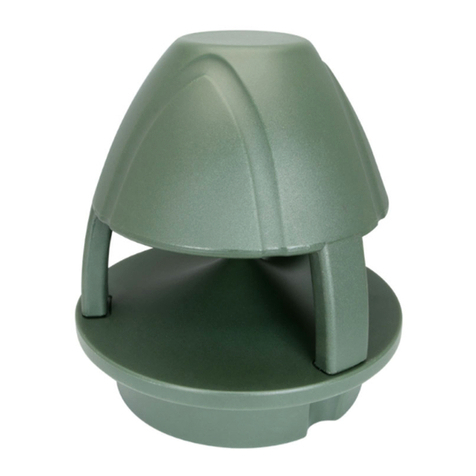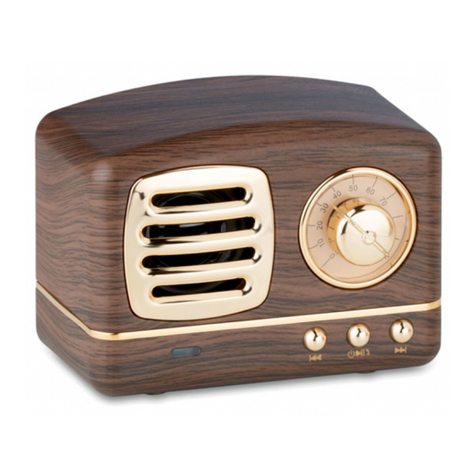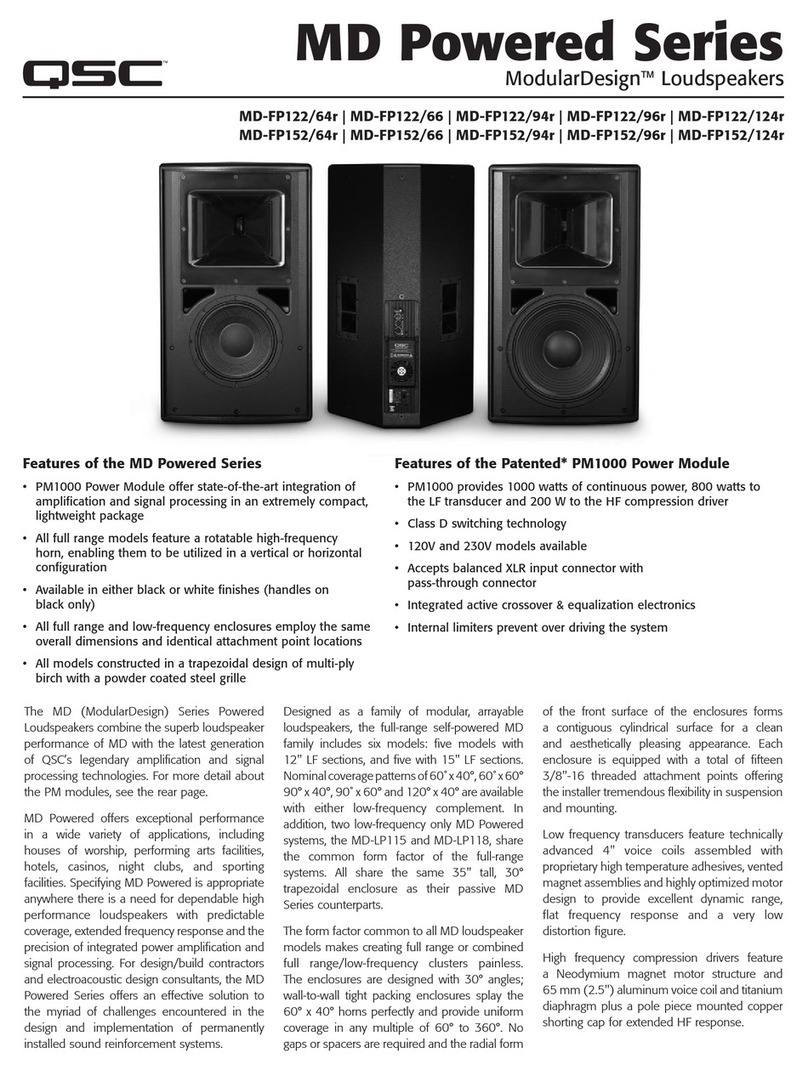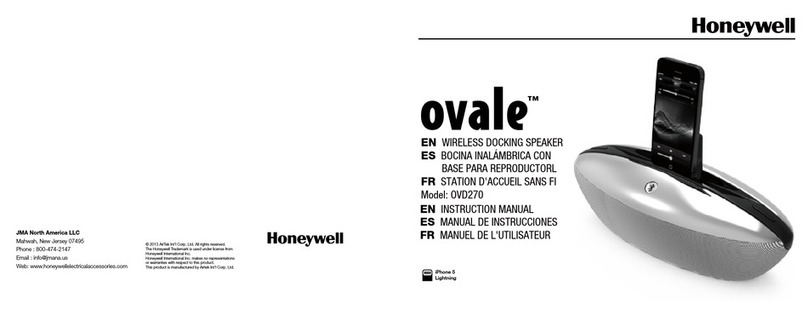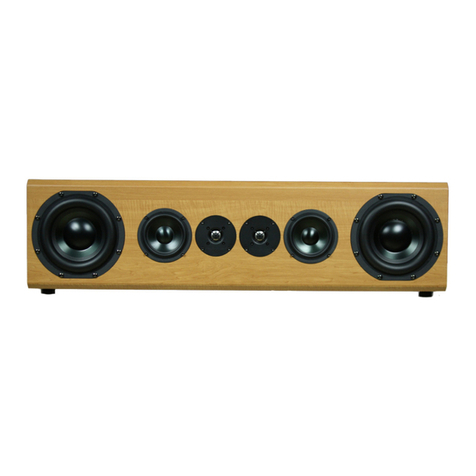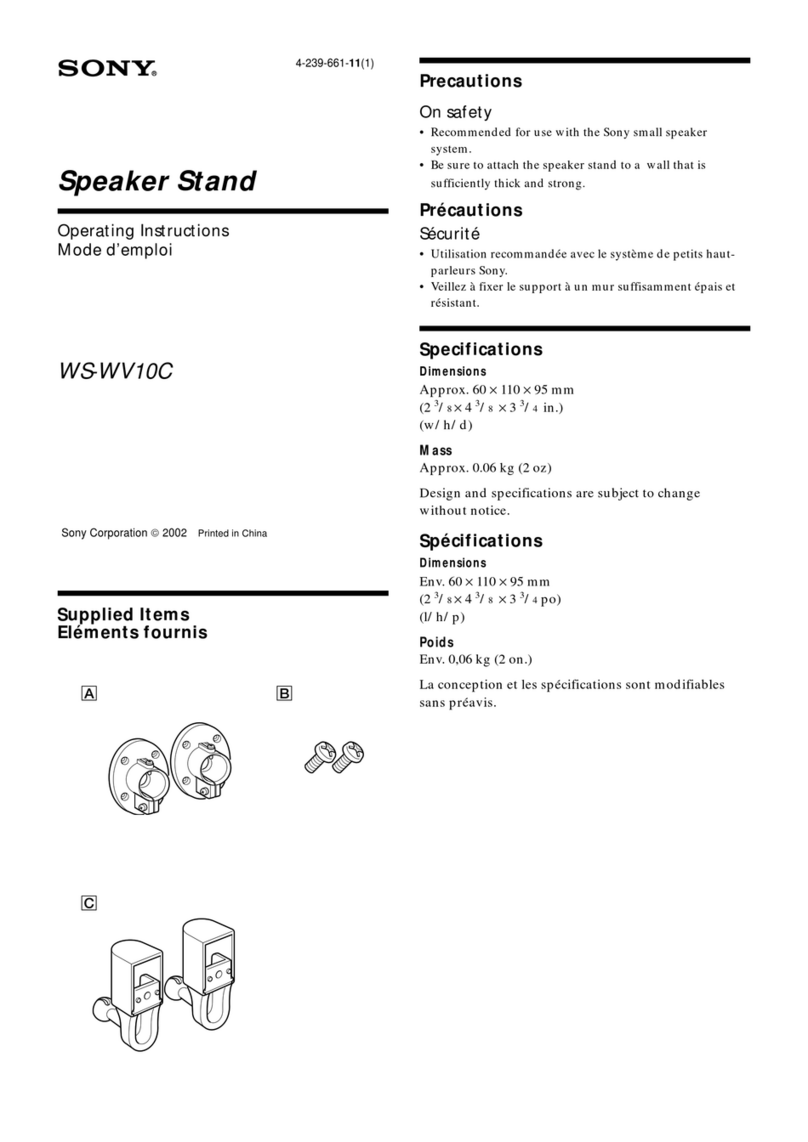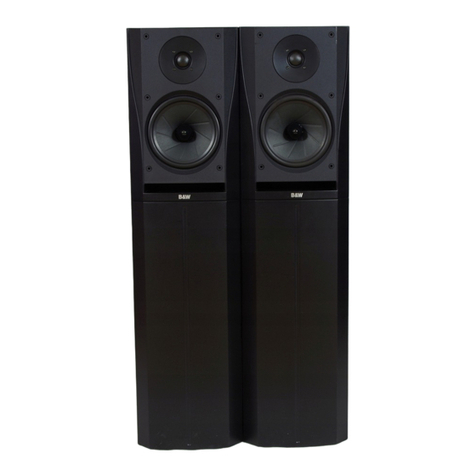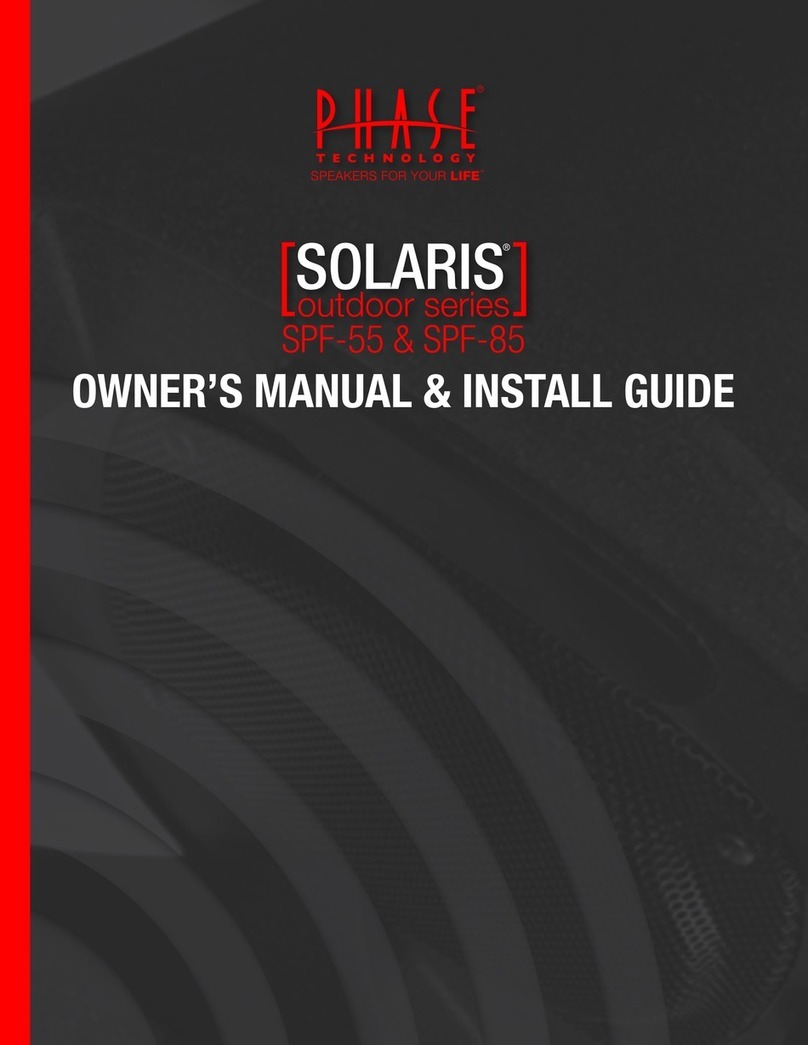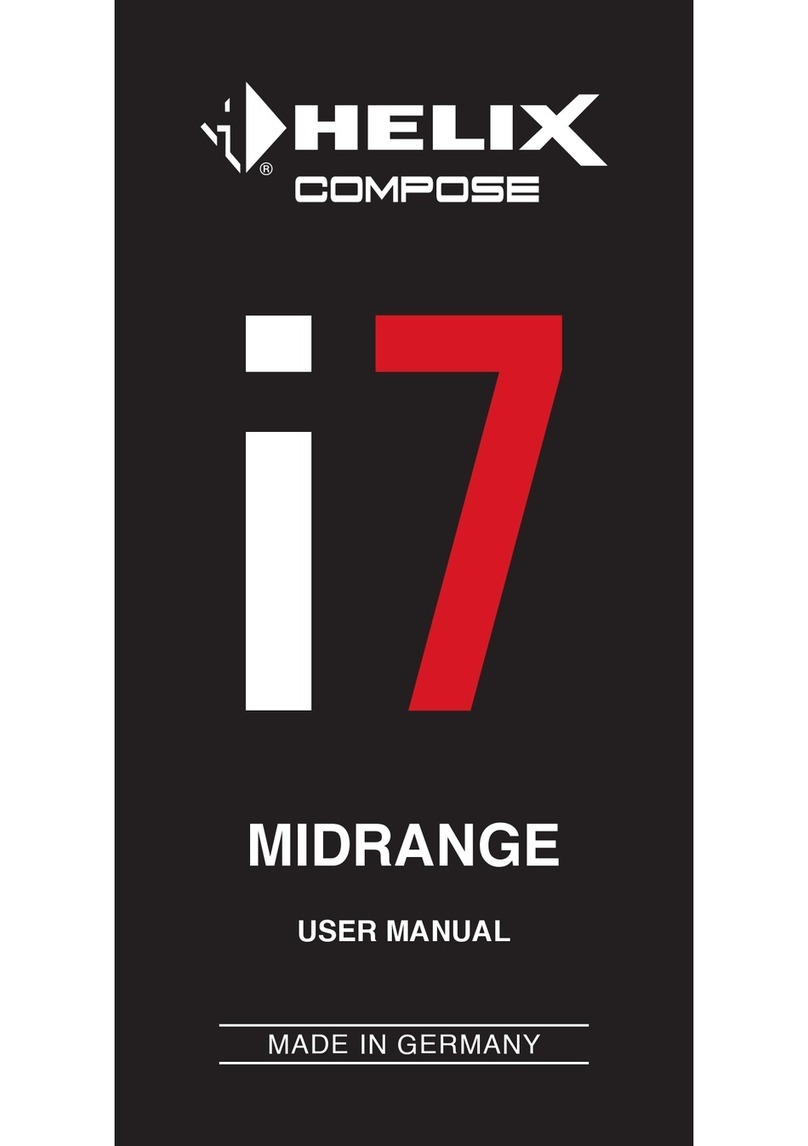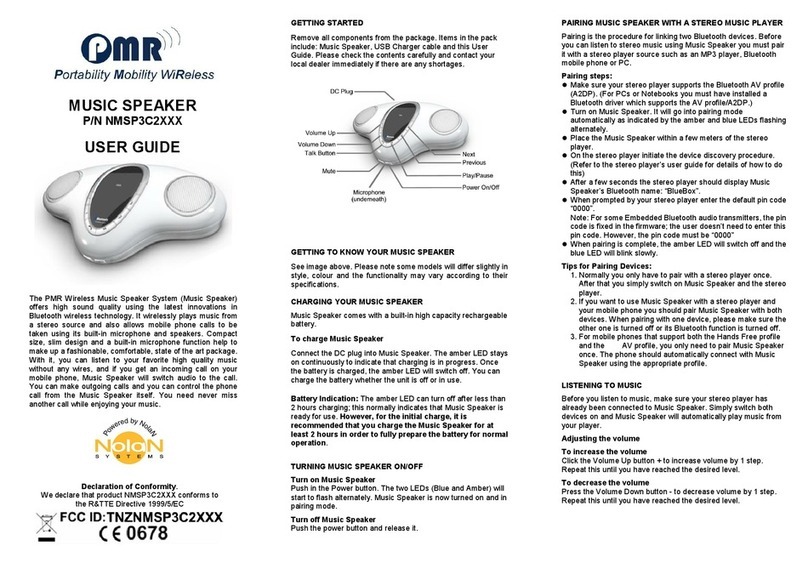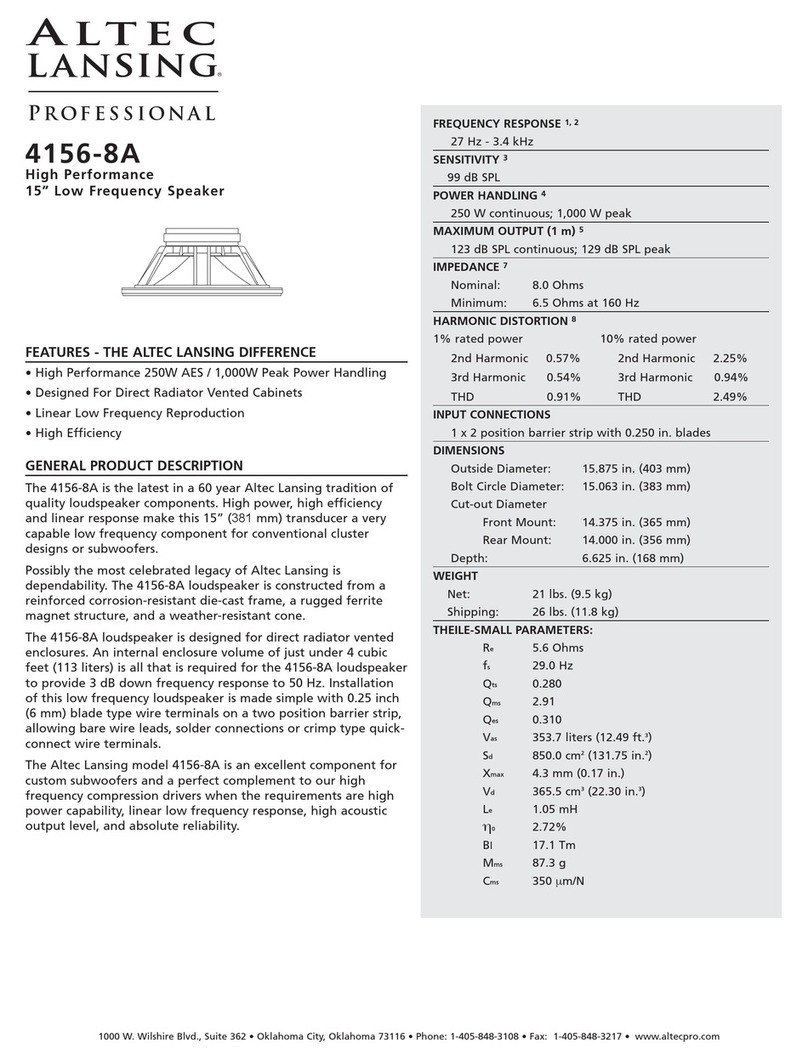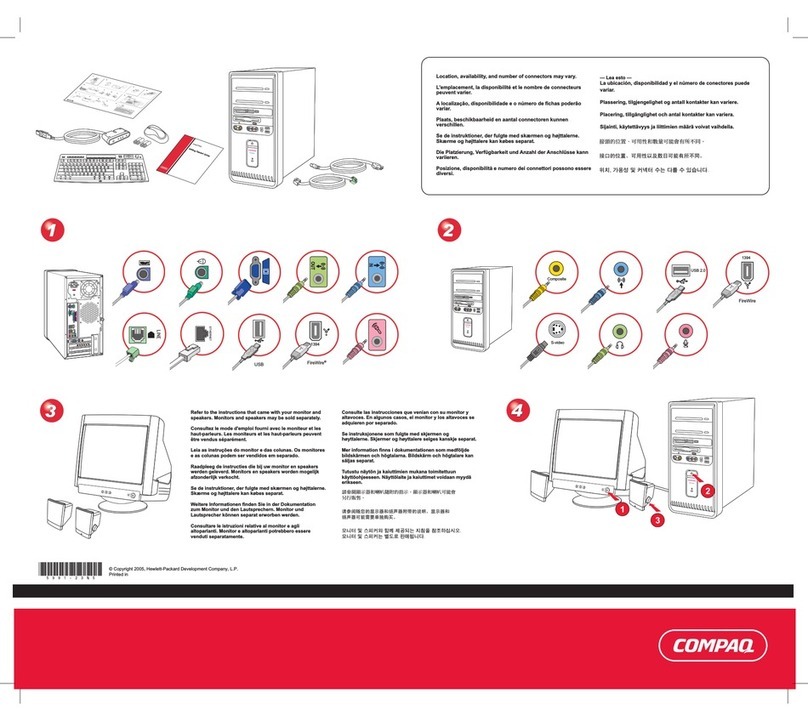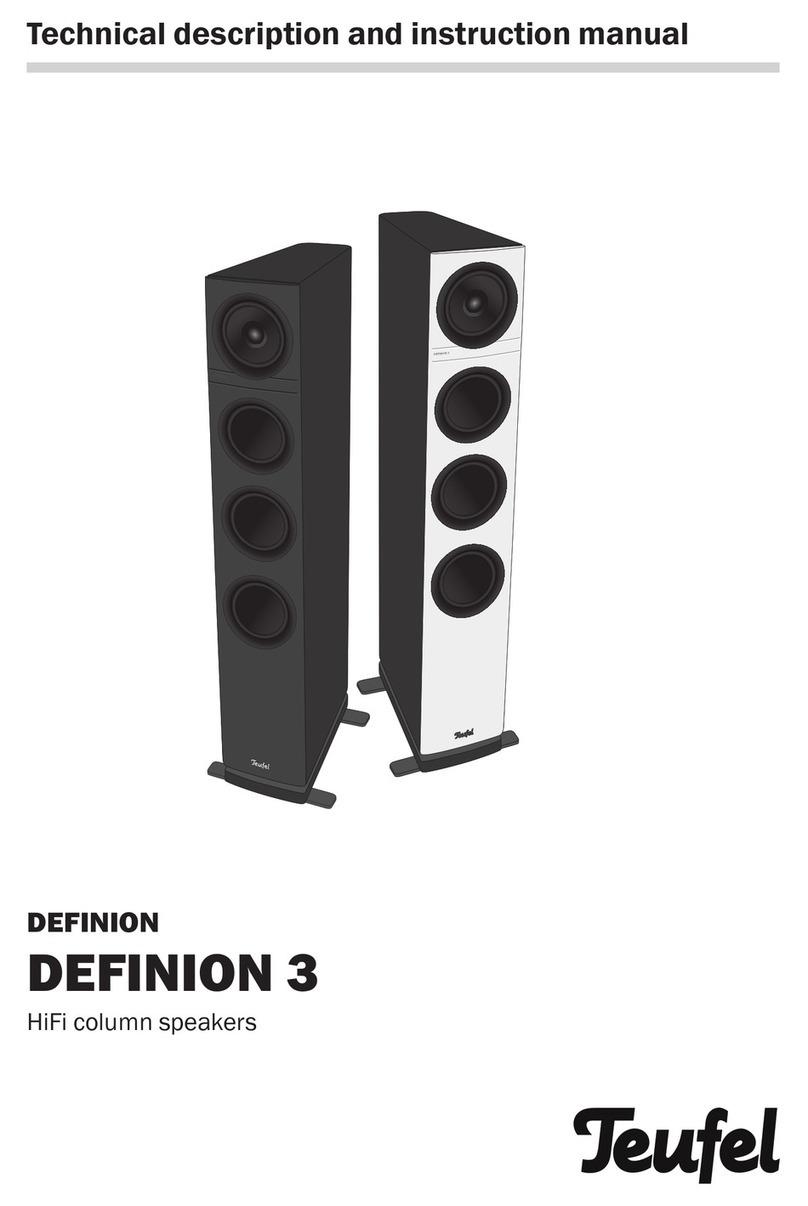dito PRO Eco Series User manual

Overall Cut-Out (Round x Depth)
PRO-525ECO 7-1/2"round 6-1/2"x2-3/8"
PRO-650ECO 8-3/8"round 7-1/4"x2-7/8"
INSTALATION GUIDE
Eco-Series
In-Ceiling/Wall Loudspeakers
Congratulaons! You have purchased a high quality
stereo loudspeaker. When matched to comparable
electronic equipment, expect years of quality high fidelity
sound. Our belief is that music maers and we are
focused on delivering superlave music reproducon
everywhere in your home.
The following manual is designed to give you, the
installer or owner, basic informaon as to the speaker’s
installaon and operaon. It is beyond the scope of this
manual to go into all the details that must be taken into
consideraon in a sophiscated high fidelity system.
When installing the wiring and speakers it is important to
adhere to all local codes and regulaons. Consulng a
professional can help to maximize your system’s perfor-
mance.
If you have any quesons regarding this speaker which
are not answered by this manual, contact your local
dealer for assistance. For the most current informaon
please visit www.ditopro.com.
MINIMUM TOOLS REQUIRED
# 2 Phillips Head Screw Driver / Drill Driver
Wire Cuer / Stripper
Other Possible Tools: Tape Measure, Pencil, Ladder,
Drywall Saw, Stud-Finder, etc.
GENERAL DESCRIPTION
These two-way speakers have specially designed woofers
with linear long throw butyl rubber surrounds for long
life and superior damping. Dome tweeters are ulized for
excellent high frequency dispension throughout your
enre listening environment.
SHIPPING DAMAGE
Each speaker is throughly tested before it leaves the
factory. However, in shipment, accidents may occur.
Please inspect your speakers carefully when you receive
them to make sure there is no damage. If there is, please
nofy your dealer or supplier inmediately for assistance.
If you received your speakers by public transportaon,
report the damage inmediately to the shipping company.
AMPLIFIER OPERATION
These speakers will perform well with amplifiers from 5
to 125 Was RMS. However, damage to the speakers can
be done by amplifiers of nearly any power rang if the
amplifier is overdriven into clipping. “Amplifier clipping”
is a phrase used to describe a condion when, because of
the volume demand, an amplifier is being asked for more
power than it can give. Clipping cause distoron of the
audio signal. If you should hear an unusual amount of
distoron at high listening levels then consider reducing
the volume.
DAMAGE TO A SPEAKER BY CLIPPING IS NOT COVERED
UNDER THE WARRANTY.
SPEAKER PLACEMENT
Placement of in-ceiling and in-wall speakers should be
carefully considered. Please contact a professional for
assistance if you are uncomfortable with the planning or
installaon process.
Ideally, the speakers should be located where they will
provide the best possible sound and ease of installaon.
It is beyond the scope of this publicaon to discuss all of
the various aspects of speakers placement, but here are
some helpful suggesons.
For the front channels of a home theater we recommend
that the speakers be placed between and 36 inches
(0.45m to 0.9m) from an adjacent wall/surface, as
measured to the center of the hole. Avoid placing the
speakers less than 12 inches (0.3m) fom an adjacent wall.
When placing speakers near a corner, avoid locang them
an equal distance from the two adjacent surfaces.
If the drywall has not yet been installed, rough-in-kits are
available to reserve the speakers locaon. The hole is
then cut when the drywall is installed.
WIRING
To achieve maximum performance we recommend that
the speaker cable be at least 16 gauge or larger for runs
over 50 feet (15m) and that the cable be double
insulated. A CL-2 or CL-3 rated cable may be required.
Check local codes. “Zip cord”, which is single insulated
and is oen made with clear insulaon, should be
avoided as it s not as durable. Allow about 2½ feet
(0.8m) of free cable at the speaker cut-out and sufficient
length at the other end to reach the electronics. Having
to add extra cable later can be tedious and me consum-
ing.
Avoid bundling speaker cables parallel to electrical cables
for extended lenghts. Though the impedance is low and
the likehood of interference low, this means ensuring the
same wire which is connected to the posive terminal of
the amplifiers has its other end connected to the posive
terminal of the speakers. It is important to check this on
all speakers. If the connecons on one of the speakers
are reversed, (out of phase) the sound quality will be
impaired.
In-Ceiling
Install Guide Page 2 of 2
www.ditopro.com

Eco-Series
INSTALLATION
If the speaker locaons have not yet been established then do so
now. If possible, assess the are behing the ceiling for possible
concealed obstrucons such as wiring, heang ducts, crossbracing
etc. Absence of a crawl space will require greater study of observ-
able clues and may also require the use of inspecon holes and
inspecon tools (camera, mirror, flashlight, etc.) Use an “electronic
stud finder” to locate the posions of the joists or studs. We
recommend that the edge of the speaker holes be at least 3/4”
(19mm) away from joists or studs whenever possible to allow
clearance for the toggle clamps.
Once the speaker locaons are established use the cardboard
templat or the plasc compass provided with your speaker to draw
the speaker cut-out. The hole diameters for the various speakers
are marked on the compass. The cardboard templates may also be
used as visual aid for placement of the speakers. To do this,
temporarily hold the templates in place with a push track or tape.
Using the proper tool cut the appropriate sized
hole in the ceiling. On drywall, clean cuts can
be made with a drywall saw. Make sure to
clean the excess debris from the fronace of
the hole to ensure a flush fit.
If the cable has not yet been run, do so now that you have beer
access to the ceiling. Once the speaker cable has been run, pull the
end of the cable out of the speaker cut-out, strip back a secon of
the jacket as needed, and then expose ½" (13mm) of each conductor.
To aid in speaker performance, a fibrous material, such as fiberglass,
may be placed behind the speaker. This may also help to reduce
unwanted sound from being transmied into adjoining rooms. If the
ceiling space has blown or loose insulaon, care must be taken to prevent
the loose insulaon from entering the back of the speaker. This can be
accomplished by placing a ba of fiber-
glass insulaon, fabric barrier, or bag
over the back of the speaker. Alterna-
vely you may use an Insu - Flate cap,
which is an acouscally transparent
fabric cover specifically designed for
this applicaon. Placing a rigid enclosure
behind the speakers can be done but the enclosure should be large
enough not to degrade the performance of the speaker. Rigid enclosures
of less than 0.75 cu (21 liters) should be stuffed with acousc insulaon
such as fiberglass.
As the drawing shows, the speakers ulize
Toggle Clamps, which, aer ghtening, hold
the speakers in place. Ensure that the toggle
clamps are rotated into their “Home”
posion prior to installaon. You will need
to remove the grille in order to access the
toggle clamps screws. To remove the grille
from the speaker, pull at the grille´s edge.
A tool is supplied that can be inserted
through a perforation at the grille´s edge. Pull the grille outward
after insertion of the tool.
Verify that the speaker fits properly into the cut-out and then
remove the speaker from the hole.
Connec the wire conductors to the terminals on the back of the
speaker by depressing each spring terminal, interting the wire
into the hole, and releasing the terminal. Use care to observe the
proper polarity (+ & -). Speakers wired out of phase will exhibit an
apparent loss of bass response.
Note: Single-Point speakers have both the left and the right
channel connections and in phase. Ensure that both channels are
connected and in phase. An out of phase connection to a single-
point speaker will be inmediately obvious when signal is applied
since there will be little if any bass output. If disconnecting one of
the inputs increases the bass output then the inputs are out of
phase.
Insert the speaker into the hole and tighten the four toggle
screws. As you start to turn each screw the toggle clamps will
rotate outward to engage the ceiling or wall materials as shown.
CAUTION: DO NOT OVER-TIGHTEN THE CLAMPS. Too much torque
may damage the toggle, causing the speaker not to seat securely.
A snug fit is all that is necessary to assure proper performance.
If the speaker frames are to be painted, either before or after
installation, use the paint-mask (the innse cardboard disc) to
cover the speaker driver(s) to prevent damage. DO NOT PAINT THE
GRILLE AND FRAME ASSEMBLY TOGETHER.The grilles can be
painted using multiple light coats of paint. Certain paints will
require thinning to avois clogging the grille´s perforations. It is
not necessary or recommended to remove the scrim cloth from
the back of the grille prior to painting.
If your speaker includes a pivoting tweeter, aiming it toward the
listening area will raise the amplitude of the highest frequencies
(>12kHz), adding brillance. USE CARE TO AVOID DAMAGING THE
DOME OF THE TWEETER WHEN AIMING!
After testing the operaion of the speakers press the grille into the
slot of the frame and enjoy.
In-Ceiling
Install Guide Page 2 of 2
www.ditopro.com
Tighten 3
Phillips screws
Clean front
edge of cutour
to ensure a
flush fit.
This manual suits for next models
2
Other dito PRO Speakers manuals

